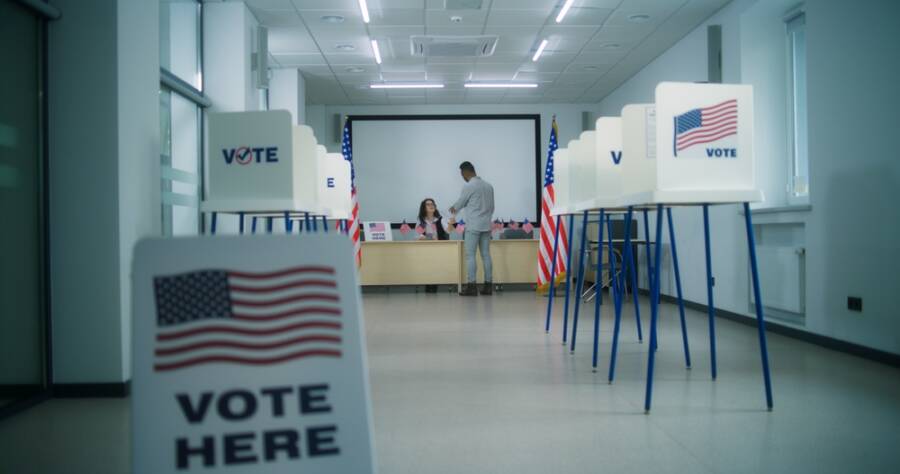What were the gender restrictions women faced in the 1960s?
The modern world has shown us freedom of speech, social connections are made much easier with the help of the internet, everybody is free to do everything they want, and most importantly, males and females have the same rights. This is like a dream come true for all the women who were living in the 1960s, and faced an abundance of non-ethical restrictions.
If they were happier or not, that’s debatable, and it’s something that we can talk about later in the comments. But for now, we will talk about all the gender restrictions women faced in the 1960s and how they impacted their day-to-day lives.

Get prescribed birth control pills
One of the worst gender restrictions women faced in the 1960s was to be forced to have kids even if they didn’t want to. Even if the discussions about birth control pills were in progress and in 1957 the first control pill was licensed was prescribed only for menstrual pain.
Nevertheless, not all pharmacies carried the pill, and it was prohibited in some areas and available exclusively to married women for family planning purposes. Some opponents said that oral contraceptives were equivalent to abortion, encouraged prostitution, and were unethical. Birth control was not authorized for use by any woman, regardless of marital status, until a few years later.
In essence, birth control would have given women a total choice over their lives, their education, and—most importantly—their careers. Something that wasn’t desired for that era.
Get an abortion
Although a few states started to liberalize their abortion restrictions near the end of the decade, women did not have widespread access to legal abortion during the 1960s. The United States Supreme Court didn’t rule that state laws that banned women from having safe abortions were unconstitutional until the momentous Roe v. Wade judgment in 1973, which basically made abortion lawful everywhere.
Interracial marriage
If in 2024 we are more aware of these things and we want to accept inclusion and see everybody as equal, back in the day, you could face prison time if you had a relationship with a man of another nationality.
Even though the Civil Rights Act was approved in 1964, the historic Loving v. Virginia lawsuit didn’t take shape until 1967. Due to the interracial marriage of the couple in question, they risked jail, which sparked a legal dispute that went all the way to the Supreme Court.
Finally, citing breaches of the Fourteenth Amendment, the Court ruled that legislation that forbade interracial marriage was unconstitutional.
Are you fond of learning more things about history and how America was in the 1960s? This book, which is available on Amazon, will help you uncover new (and old) facts that have shaped our country as we know it today. America in the 1960s (Decades of American History) is written in a friendly manner that adults and young kids can easily understand. Get lost in 128 pages of history, photography, and music specific to the 1960s.
Open a bank account and get a credit card
Among all the gender restrictions women faced in the 1960s, opening a bank account and having full financial independence were in the top 10. Even if a woman was married, her spouse had to agree to cosign with the bank to provide her with a credit card. In many cases, credit cards were only granted with a husband’s signature as recently as the 1970s.
Unfortunately, women were not allowed to get credit on their own until the Equal Credit Opportunity Act of 1974 made it unlawful to discriminate against them based on their gender.
Protect themselves in case of domestic violence in the marriage
Nobody should be treated badly, no matter if they’re in a relationship, partnership, or marriage. If you’re with someone you supposedly love, then applying domestic violence should be out of the discussion. However, back in the day, women weren’t exactly protected by law in cases of marital abuse. Even rape was considered a “family matter.”
Only in 1994 was a law introduced that protected women against domestic violence and rape by their husbands.

Get an academic education
Were you a woman in the 60s who had a dream of getting a bachelor’s degree? Oh well, bad news! You had to put your dream on hold because Yale, Princeton, Harvard, and other Ivy League universities did not admit women. And this was the situation until the late 1960s and early 1970s, when Harvard completely integrated Radcliffe College in 1977, enabling women to earn degrees from Harvard, whereas Yale and Princeton welcomed women for the first time as students in 1969.
Got pregnant? There was a high chance of losing your job
If you were among those women who were lucky to have a good job but got pregnant, well, unfortunately, your employee could decide to fire you. Luckily, after many women fought back against this thing, in 1978 it was completely eradicated, making sure that no woman could be fired only because she got pregnant.
Same health insurance as men
For those who weren’t living in that era, this seems out of this world. However, in the 1960s, women didn’t have the same rights as men when it came to health insurance. They had to pay a lot more for routine check-ups compared to men.
In addition, women had to ask their husbands to accompany them if they required medical attention, and these consultations were only conducted in their husbands’ presence.
Experience equality in the workplace (nor the possibility of taking legal action against harassment)
Kennedy’s Commission on the Status of Women issued a report in 1963 that included, among other things, the following: women were excluded from higher-paying professional professions and received 59 cents for every dollar earned by males.
Gender discrimination was outlawed along with racial discrimination during the 1964 Civil Rights Act’s legislative process. After the amendment regarding women in the workplace was not given serious attention, the National Organization of Women was founded to ensure total equality for women in really equal partnerships with men.
Until 1977, there was no active law to punish men who harassed their female co-workers, forcing many women in the 1960s to endure workplace harassment.
Serve on a jury
This varied from one state to another because, for example, Utah has deemed everybody fit for jury duty since 1879. Why was this not a thing suitable for women? Or at least this is what people thought back in the day? Because women were seen as caregivers, they had to take care of the kids and the household—two major duties.
Plus, men thought they were also a bit too soft to be able to have an impartial attitude regarding the process. And those gory details about the crimes were just too much for a woman to hear. Only later in 1973, all 50 states allowed women to serve on juries.
We’ve come a long way, and that’s amazing, but while a lot of progress has been made, there are still women who face challenges in their day-to-day lives. So, as a society, we still have much work to do to ensure the well-being of every individual, regardless of their gender.
You may also like to read 14 Bizarre US Laws You Won’t Believe Are Real.









7 Responses
Had to wear dresses everywhere. Hard to buy a home alone. Be a high lift driver, truck driver,many inside factory jobs were for men only. Riding motorcycles was rare. Not hired on the trains. Go to church in pants . Work on highways construction.
In 1965 woman could not work at McDonalds. I tried to work there and a male classmate told me they didn’t hire females.
I graduated from high school in 1956 and went into the job arena the next day. Some of these restrictions hit me, but I had a checking/savings account in 1956 and a credit card in 1958. I saved and bought my first car in 1957 and my first new car in 1959 (but my mother had to co-sign). The biggest fight was for equal pay !!!! The first time I was really hit with this one: I had worked in a one-girl office for several years. The business grew and a fellow was hired to take over the bookkeeping portion (about 1/3 of my job), given a new electric typewriter and a few more “perks”. I was OK with this till I found out his starting salary was almost double what I was making after so many years. This was about 1965 and the hell I raised had my salary increased the following payday!!!! Good training for the rest of my working career !!! I LOVED WORKING !!!!!
My mom had to say she was single to work in a sewing factory where she lost 2 babies.
I’m female & grew up late 1950’s…all the 1960’s, graduating HS in the 1970’s. Later, college. I have 140+ IQ…known to me & my guidance counselors since middle school (it was they who tested me), yet, my HS counselor tried to bully me & my parents into leaving a college-bound track (top 5% GPA of a large HS graduating class) for a newly-forming vocational tech HS….wanted me to try dental hygiene. I have nothing against that, except that, I went on to finish 4 yrs of college in 2-1/2 yrs w/double major in my concentration, & another single subject major, all magna cum laude. I “stayed home” for a while to raise 2 fantastic boys & a foster daughter who all excel in their fields. Took courses here & there during that time, earning advanced degrees & certifications, then worked 30 yrs at the highest end of earning in my field w/MS+90, soon to retire. Today, think I could become a dental hygienist within a few months if I wanted to, as my last career, in a lark. The trouble w/all this is, that my brother, 2 yrs behind me, w/low average ability, & “C” average in the same HS w/same counselors…was NEVER approached to leave his college-bound track for this new vo-tech HS. He tried community college. Failed out…never went on. Bounced around. Depended upon our parents for most everything for yrs. Finally got a decent job in manufacturing near 40 yrs old, eventually walked away from that. Even with the uneven support we received from our 1960’s era educations/counselors/etc….he still skated and failed, & I did not. Because he could.
Thanks for sharing this. I was born in 1970. So it’s interesting that alot of the freedoms I enjoy today.actually became law while I was growing up.
We have come a long way, I supervised men in a half way house for ex-offenders.